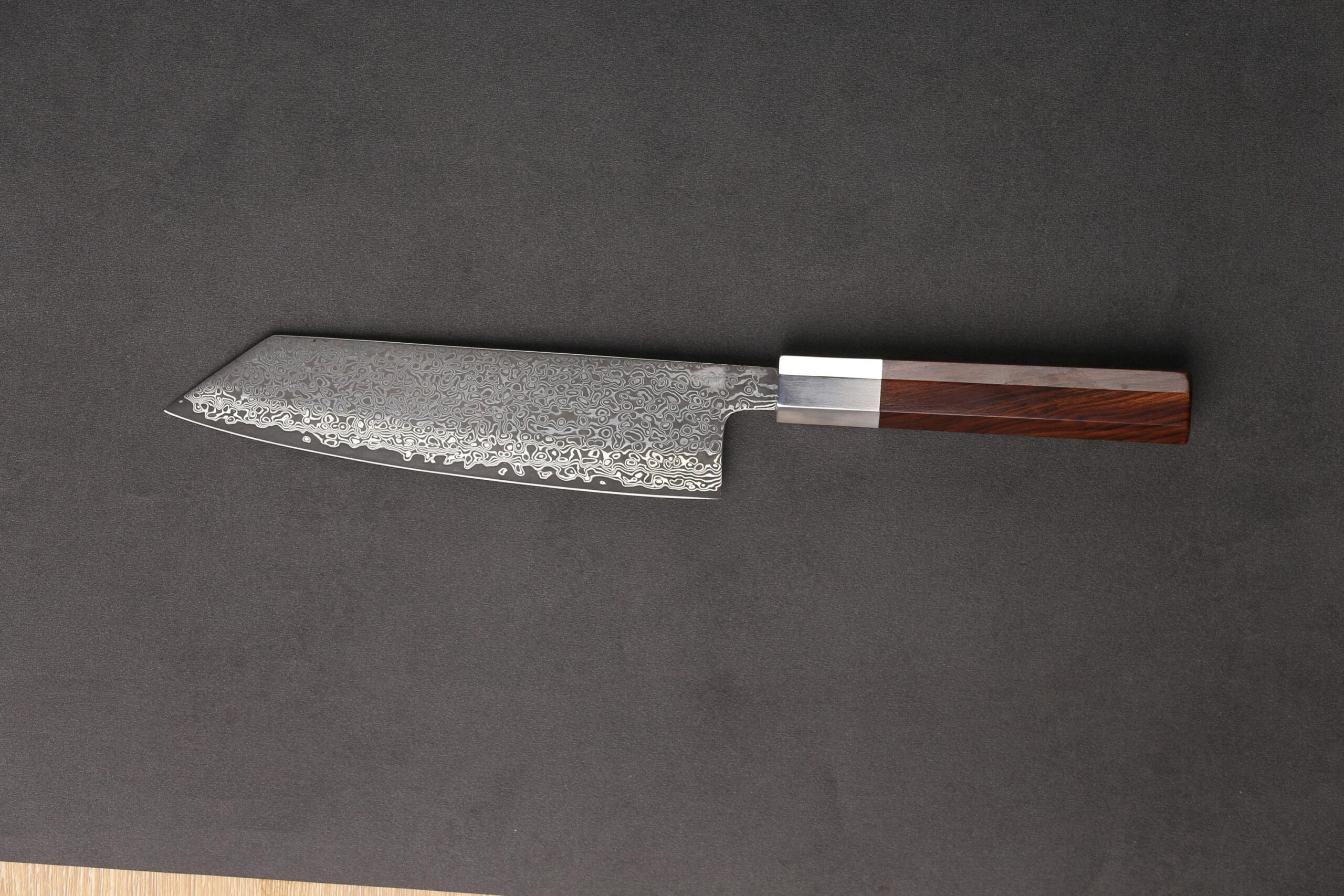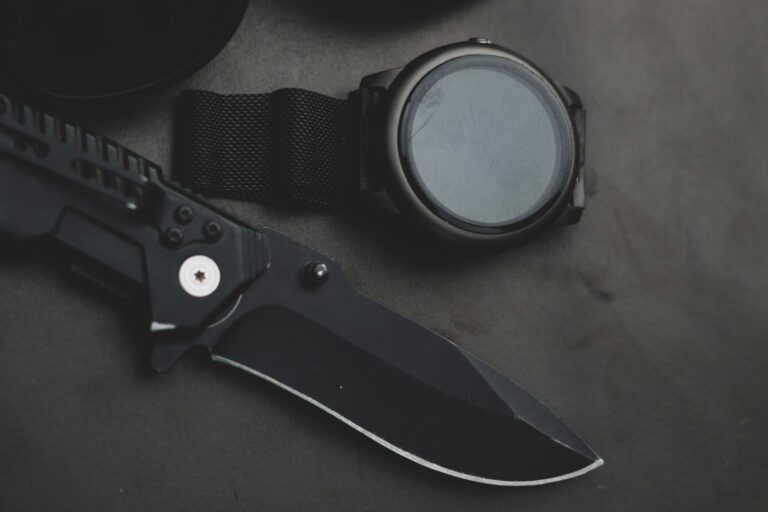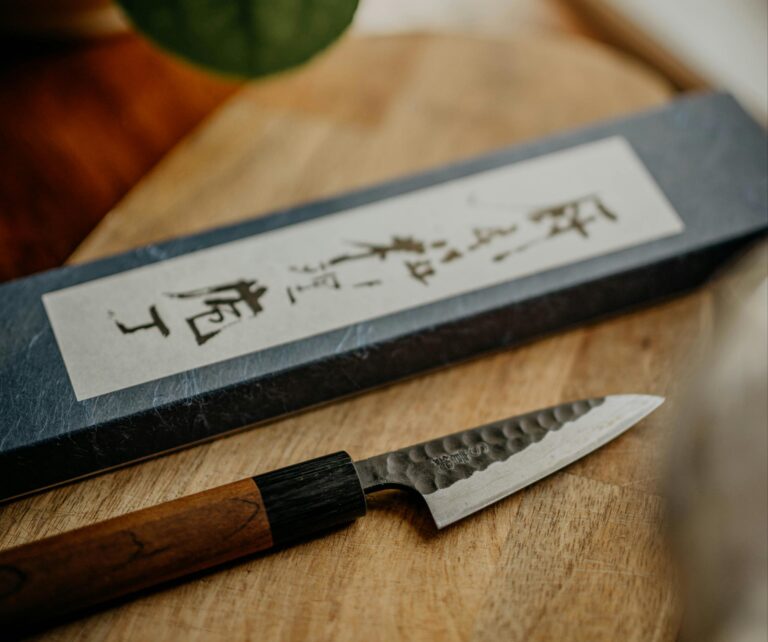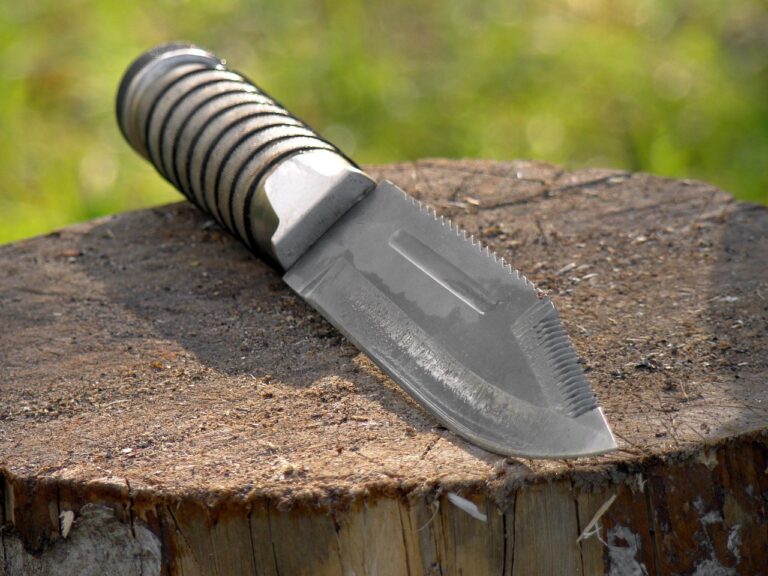A reverse tanto blade is easy to spot by its sharp, angled spine and strong tip, making it ideal for precise piercing and heavy-duty cutting tasks. You can offer customers a modern twist on classic tanto blades with this unique shape, which stands out in a variety of everyday carry, hunting, and tactical knives according to Marine Approved.
Understanding blade shapes like the reverse tanto helps you guide buyers to the right tool for their specific needs, from slicing to detailed cuts. This guide will help you explain blade types clearly to your customers and boost your sales confidence.
What Is A Reverse Tanto Blade?
A reverse tanto blade is a unique shape that stands out in the knife world. The design features a strong, angular tip and a long, flat belly—giving you extra cutting power and durability. You can easily spot a reverse tanto by its straight spine and the way the tip angles down, rather than up like a standard tanto blade.
Reverse tanto blades first gained popularity in modern folding knives, but they’ve become favored by enthusiasts and sellers alike. The shape is prized for its ability to stand up to heavy use without sacrificing precision. Knife makers often advertise the toughness of the tip, noting it can handle repeated piercing and slicing, even on harder materials. Many sellers highlight these blades’ popularity among users who value reliability.
Reverse Tanto Vs Tanto: What’s The Difference?
Reverse tanto and tanto blade shapes may look similar at first, but they have different features and uses. Understanding these differences helps you choose the best knife for your needs and your buyers.
Shape
The tanto blade design has a straight spine and a sharply angled tip. Its unique angle forms a chisel-like point, giving it a classic “sword tip” appearance. In contrast, a reverse tanto features a straight cutting edge with a curve or angle on the spine leading down to the tip.
This means the reverse tanto places the angle on the spine, not the cutting edge. The tip appears almost “dropped” compared to the standard tanto. This key structural difference affects handling and usage.
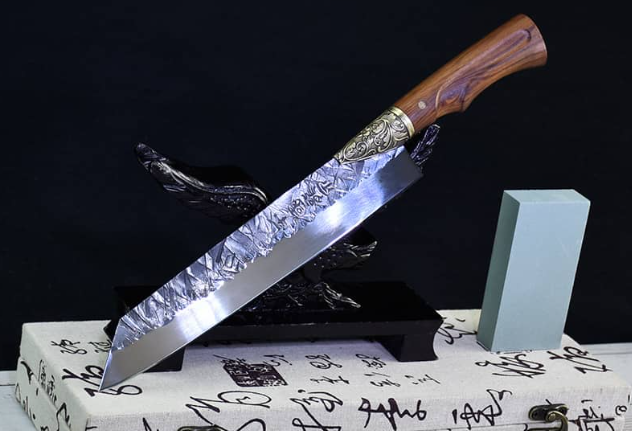
Learn more at: https://leeknives.com/handmade-chef-knife-lkhkk10003/
Edge
A tanto blade has a strong, straight main edge and a sharply upturned tip edge. Both meet at a clear corner, perfect for piercing and slicing tough material. This gives you two distinct cutting surfaces.
The reverse tanto has a long, straight cutting edge extending nearly the full length of the blade. There is usually no separate tip edge, so the cutting performance feels more like a utility or drop point knife. This makes slicing and controlled cuts easier.
Tanto edges need more skill to sharpen because of the distinct corner. The reverse tanto, with just one main edge, is simpler to maintain and sharpen at home.
Advantages Of Reverse Tanto Blade
A reverse tanto blade gives you strength at the tip, extra durability, and the ability to handle different tasks. You get a blade shape that suits cutting, piercing, and everyday utility jobs.
Strong Tip
The main advantage is the reinforced tip. The reverse tanto blade’s thick spine runs right to the point. This gives extra support for tough jobs. You can pierce, cut, and even pry with less risk of tip breakage.
Many knife makers design the reverse tanto for hard use. You see this style on flipper knives built for EDC. Some blade makers also give the tip a flat grind for even more strength.
Robust Profile
A reverse tanto blade’s profile stands out for its wide, flat shape near the tip. This design provides extra durability along the entire spine. The straight edge makes sharpening easy. It is less likely to chip or bend, unlike thinner blade shapes.
Reverse tanto blades offer a balance between strength and control, making them safer for tough tasks. Sellers often recommend this blade profile for customers who need a reliable and sturdy work knife.
Buy Wholesale Knives and Start Scaling up with Us Today
Contact us and connect with a sales rep to get a free quote.
Disadvantages Of Reverse Tanto Blade
Reverse tanto blades provide strong piercing abilities and a unique shape. However, these knives come with some key drawbacks that may limit their performance in daily use.
Reduced Slicing Performance
The reverse tanto, like the traditional tanto, often lacks a pronounced belly or curved edge, which can make slicing tasks less efficient compared to blades designed for slicing, like drop points or clip points.
The double bevel design of the reverse tanto can require more attention and skill to sharpen correctly compared to single-bevel blades.
What Are Reverse Tanto Blades Good For?
Precision Cutting:
Its straight primary edge and sharp, defined tip make it effective for detailed tasks like slicing, trimming, or working with materials that require clean, controlled cuts (e.g., fabric, leather, or small wood pieces).
Tactical And Self-Defense Applications
Tactical Applications: The reverse tanto’s reinforced tip thrives in tactical use, withstanding hard piercing (locks, wood) without breaking. Its balanced build enables precise thrusts, while the straight edge handles utility cuts—ideal for field durability and versatility.
Self-Defense: For self-defense, its robust tip ensures effective penetration through barriers like clothing. The angular design aids controlled strikes, with a strong spine preventing tip failure, pairing offensive power with stable handling in close encounters.
Conclusion
If you want a knife that combines a strong tip with a flat cutting edge, the reverse tanto blade is a smart choice. This blade shape stands out due to its tough point and solid, versatile profile.
Many knife users pick reverse tanto blades for daily cutting, piercing, and reliable performance. The design allows for detailed slicing and also works well for tougher tasks. You will notice that durability and precision are key advantages for this type of blade.
If you want to buy these knives at wholesale, or if you are a seller looking for private label solutions, you may want to request a quote to see your options. Sourcing directly from manufacturers can help you meet your business goals and offer your customers something unique.
Frequently Asked Questions
How does a reverse tanto compare to a traditional tanto in terms of functionality?
A traditional tanto blade has an angled tip that points upward, while a reverse tanto has the angle facing downward toward the cutting edge. The reverse tanto’s design provides better control for detail work and fine slicing.
Unlike the original, the reverse tanto is less about heavy stabbing and more about versatile cutting. You will find it on many modern knives, such as the Benchmade Mini Osborne, which is popular for everyday use.
What are the advantages of a reverse tanto blade over other blade shapes?
You get a very strong blade tip due to the thick spine meeting the tip at a sharp angle. This makes it ideal for piercing tough materials without breaking.
Reverse tanto blades also offer great control for slicing tasks. Compared to drop point and clip point blades, the flat tip improves precision, especially in tight spaces. These advantages make them a favorite for everyday carry and tactical knives.
What features make the Kershaw reverse tanto models stand out?
Kershaw offers reverse tanto models with robust construction and user-friendly designs. The blade shape allows for precise slicing and safe tip use.
You also get high-quality steel, smooth opening mechanisms, and value for the price. Kershaw knives often compete with other major brands like Cold Steel and Leatherman Skeletool KBX in terms of performance and durability. This makes their reverse tanto options an excellent choice for sellers.
